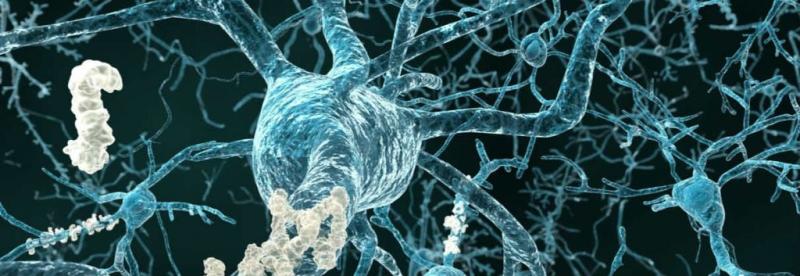Peptide Therapeutics in Metabolic Disorders- Playing an Important Role in Managing Metabolic Disorders
History and Development of Peptide Therapeutics
The discovery of insulin in the 1920s marked the beginning of peptide therapeutics in managing metabolic disorders. Insulin, a peptide hormone composed of 51 amino acids, revolutionized the treatment of diabetes by allowing patients to live longer and healthier lives. Previously, diabetes was mostly a fatal disease. After insulin, other peptide hormones like glucagon were identified and found useful in managing blood sugar levels.
In the following decades, scientists made major advances in understanding human physiology and biochemistry at the molecular level. This led to the discovery of many other peptide hormones, enzymes, and signaling molecules in the body. Researchers also gained the ability to synthesize peptides in the laboratory through various chemical and biological methods. This opened new possibilities for developing peptide-based drugs.
Structure and Properties of Peptide Therapeutics
Peptide Therapeutics In Metabolic Disorders are short chains of amino acids linked by peptide bonds. They typically contain 2-50 amino acids. Compared to small molecule drugs, peptides have larger and more complex structures that allow them to bind protein targets with high selectivity and specificity.
Being macromolecules, peptides also have different pharmacokinetic and pharmacodynamic properties than small molecules. They are usually not orally bioavailable and require injections or other parenteral routes of administration. However, their complex structure also makes them less likely to have off-target toxicity. Due to specific receptor binding, peptides tend to have a good safety profile.
Peptides in Diabetes Management
After insulin, several other peptide therapeutics were developed for diabetes. Glucagon-like peptide-1 (GLP-1) receptor agonists like exenatide and liraglutide became blockbuster drugs for treating type 2 diabetes. They mimic the blood sugar lowering effects of the endogenous GLP-1 hormone.
Amylin analogs pramlintide and davalintide act by slowing gastric emptying and suppressing glucagon secretion. When combined with insulin, they help control post-prandial blood sugar spikes. Pramlintide is an FDA-approved adjunct therapy for type 1 and type 2 diabetes.
Additional peptides in development target various pathways involved in insulin secretion, glucagon regulation, fat metabolism, and pancreatic beta cell protection/regeneration. Their goal is to restore normal glycemic control through physiological mechanisms. This offers prospects for better diabetes management with fewer side effects.
Peptide Therapeutics in Obesity
Obesity is a major risk factor for diabetes and other metabolic disorders. Several metabolic peptides play important roles in regulating appetite, energy balance, and fat metabolism. Researchers are targeting these pathways to develop anti-obesity peptide drugs.
One such example is liraglutide, a GLP-1 receptor agonist approved for chronic weight management. It suppresses appetite and promotes satiety through central and peripheral mechanisms. In clinical trials, liraglutide led to significant and sustained weight loss when used long term for obesity.
Another peptide in late-stage trials is semaglutide, a GLP-1/glucagon receptor co-agonist. By activating complementary metabolic pathways, it produces greater weight loss than liraglutide alone. Semaglutide reduced body weight by 15% on average in pre-registration studies of obesity.
Additional peptides under investigation aim to activate anorectic signals like CCK, PYY, amylin, or suppress orexigenic pathways like ghrelin. Their goal is long-term obesity management through appetite and fat regulation rather than short-term weight loss.
Peptide Therapeutics for NASH and Related Disorders
Non-alcoholic fatty liver disease (NAFLD) and its progressive form non-alcoholic steatohepatitis (NASH) have become major public health issues worldwide. Currently, there are no FDA-approved drugs to treat NASH. Several metabolic peptides show promise here.
Glucagon receptor antagonism reduces hepatic gluconeogenesis and improves insulin sensitivity. A peptide called ganetespib entered phase 2 trials for NASH based on its preclinical anti-fibrotic effects. Another approach utilizes FGF21, a metabolic regulator of lipid and glucose homeostasis. A long-acting FGF21 analog is under late-stage testing to resolve NASH and reverse fibrosis.
Peptide drugs targeting gut-liver inflammation also look favorable. An amylin analog showed anti-inflammatory and anti-fibrotic effects in animal NASH models. Its role in human NASH is now being evaluated. GLP-1 agonists are already approved to treat diabetes and obesity; evaluating their potential in NASH/NAFLD is another active area of research.
The complex pathogenesis of NASH involving metabolic, inflammatory and fibrotic pathways offers multiple angles for peptide therapeutic intervention. Establishing efficacy and safety will require large clinical studies, but peptides present a promising class of future therapies.
Emerging Applications and Future Outlook
With advancement in medical research, novel metabolic peptides and their functions continue being discovered at rapid pace. This expands the scope for peptide therapeutics in related areas. For example, assessing risks of cardiovascular diseases in metabolic disorders. Some peptides influence cardiovascular health markers like cholesterol, blood pressure, endothelial function independent of their primary actions. Their role in preventing heart disease in diabetes, obesity is under active investigation.
Technological developments in peptide engineering and delivery also drive new opportunities. Improved modifications are making peptides more stable, longer-acting with enhanced pharmacokinetics. Alternative delivery methods like transdermal patches, pulmonary inhalers could help overcome injection barriers. Cell-penetrating peptides offer new means to transport therapeutic cargo across membranes into target tissues.
Combination therapies utilizing multiple peptides targeting overlapping metabolic pathways offer synergistic benefits. Their safety and tolerability profile also makes peptide drug combinations feasible in clinical practice. Overall, with continuous innovation, peptide therapeutics are likely to expand their sphere of influence significantly in metabolic research and patient care in the coming years.
Get this Report in Japanese Language-代謝疾患におけるペプチド治療薬
Get this Report in Korean Language- 대사 장애의 펩타이드 치료제
About Author-
Money Singh is a seasoned content writer with over four years of experience in the market research sector. Known for her strong SEO background, she skillfully blends SEO strategies with insightful content. Her expertise spans various industries, including food and beverages, biotechnology, chemical and materials, defense and aerospace, consumer goods, etc. (https://www.linkedin.com/in/money-singh-590844163)
